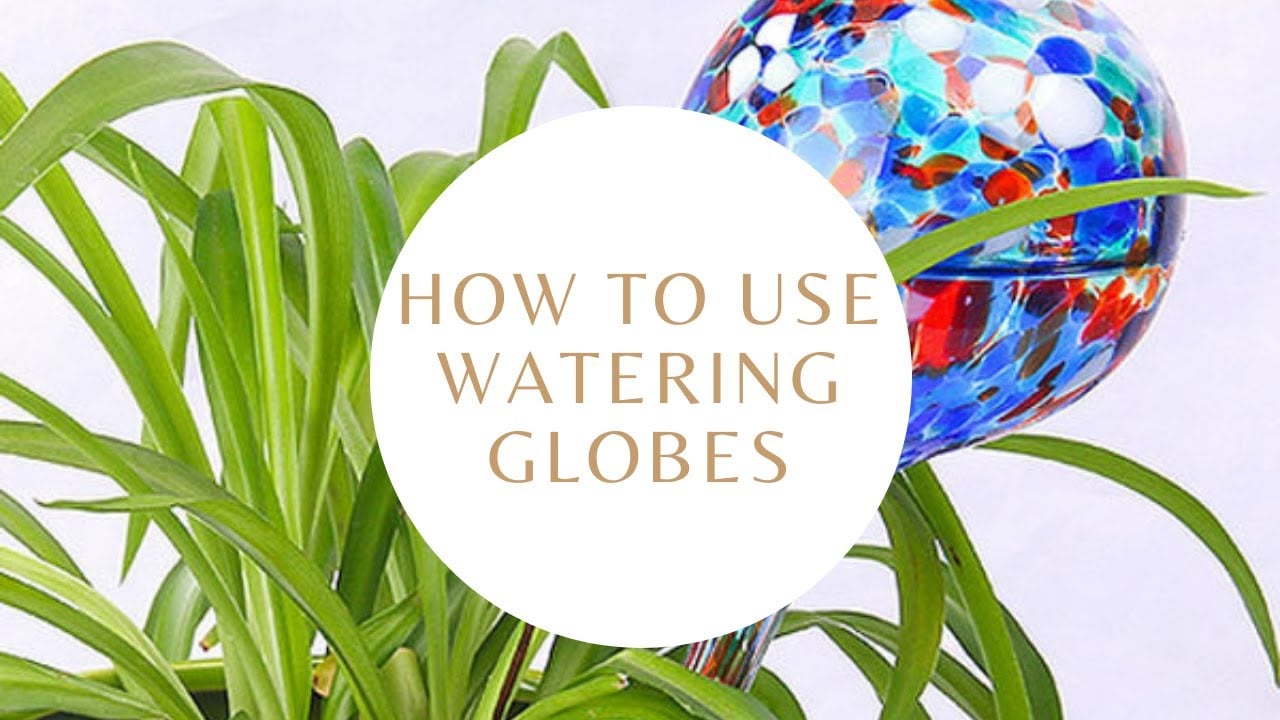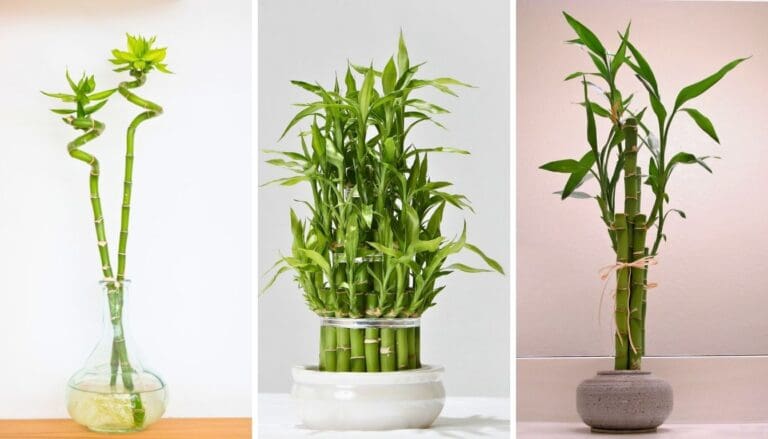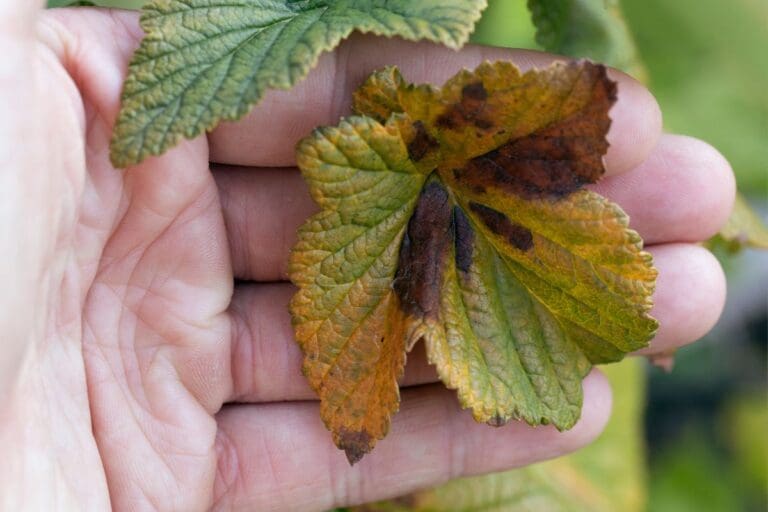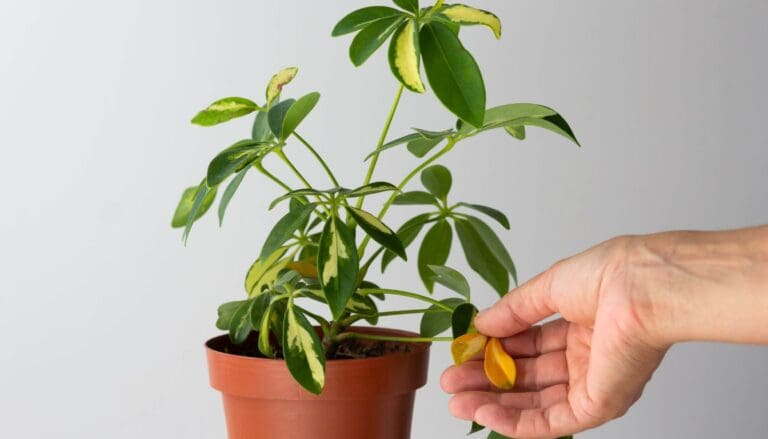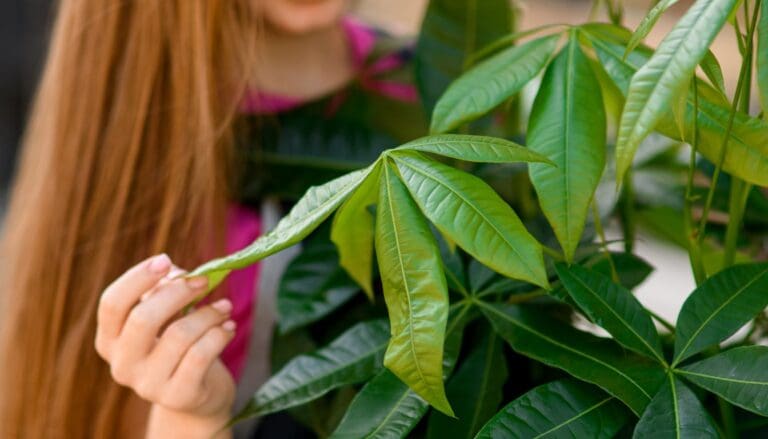8 Tips to Keep Your Plants Alive While You’re on Vacation
Planning a trip is always exciting, but, honestly, I can’t help but worry a bit about my plants when I’m gone. I just want my plants to stay healthy and happy, even if I’m not there to water them every day.
So, I’ve pulled together some easy tips that help me keep my plants alive while I’m away. With a little prep, I can actually relax and enjoy my time off, knowing my green buddies are doing okay.
Please note: Simplify Plants is reader-supported. As an Amazon Associate, I earn from qualifying purchases made by our readers with no extra cost added to you all! Some links in the post are affiliate links and I get a commission from purchases made through links in the post.
1) Set up a self-watering globe system

Whenever I travel, one of my go-to tricks is using a self-watering globe system. These little glass or plastic globes are simple but surprisingly effective.
I just fill them with water and poke the pointed end into the soil. The water releases slowly over several days, keeping the soil damp, which is honestly a relief.
This setup is best for small and medium-sized houseplants. I love that I don’t have to bug anyone to stop by and water—these globes just quietly do their thing.
Depending on the globe and the plant, they’ll usually last about a week. If I’m away longer, I’ll throw in an extra globe or use a bigger one.
Filling them up takes just a few minutes, and I don’t need any fancy tools. Really, it couldn’t be much easier.
Self-watering globes are reusable, which I appreciate. They don’t make a mess or flood the pot, either.
When I get home, I just pull them out, give them a quick rinse, and stash them for next time. Makes travel a lot less stressful, honestly.
2) Place plants in a shaded, cool spot

Before I head out, I always move my plants away from direct sunlight. Too much sun dries out the soil fast and can really stress my plants when I’m not there to help.
A cool, shaded spot—maybe near a north-facing window or in a bathroom with a little light—helps them stay moist longer. Cooler temps mean they don’t gulp down water as quickly.
I also like to group my plants together in one area. This boosts humidity around them, which slows down water loss from their leaves.
If I usually keep plants outside, I’ll bring them in so they’re not getting blasted by sun or wind. But I avoid placing them right in front of fans or vents.
Just this simple switch helps my plants stay a lot healthier while I’m gone. Coming home to wilted leaves is the worst, so anything to avoid that is worth it.
3) Use a drip irrigation kit like Rain Bird
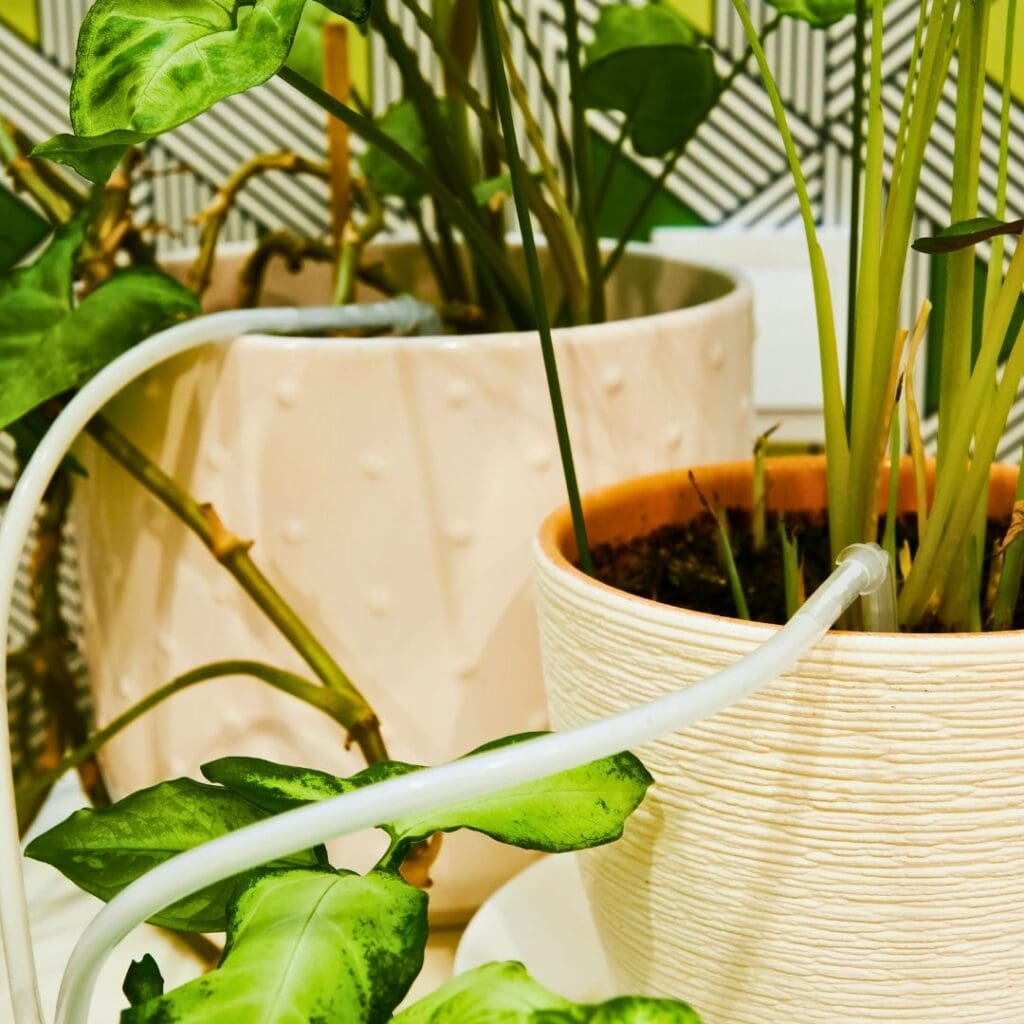
If I’m going away for more than a few days, I’ll set up a drip irrigation kit like Rain Bird. It’s such a handy way to keep everything watered without overdoing it.
These kits come with tubes and tiny drip emitters. I hook it up to my outdoor faucet, and water just slowly drips right onto the roots.
What’s great is I can control the amount of water each plant gets. Most kits even have timers, so I set the schedule and forget about it.
Setting up the kit isn’t hard. I just cut the tubing, pop on the drip heads, and place them near each plant. The instructions are usually pretty straightforward.
Drip irrigation works for indoor and outdoor plants—pots, beds, whatever. The slow drip means less runoff, so more water actually gets to the roots.
Rain Bird is just one brand, but there are plenty of others out there. I like Rain Bird because the parts fit together easily and it’s easy to find.
Before I leave, I double-check the timer. Just want to make sure it’s actually working, you know?
With this setup, I don’t have to stress about my plants drying out, even if I’m gone for a week or two. It’s a lifesaver for travel.
4) Group plants close to retain humidity
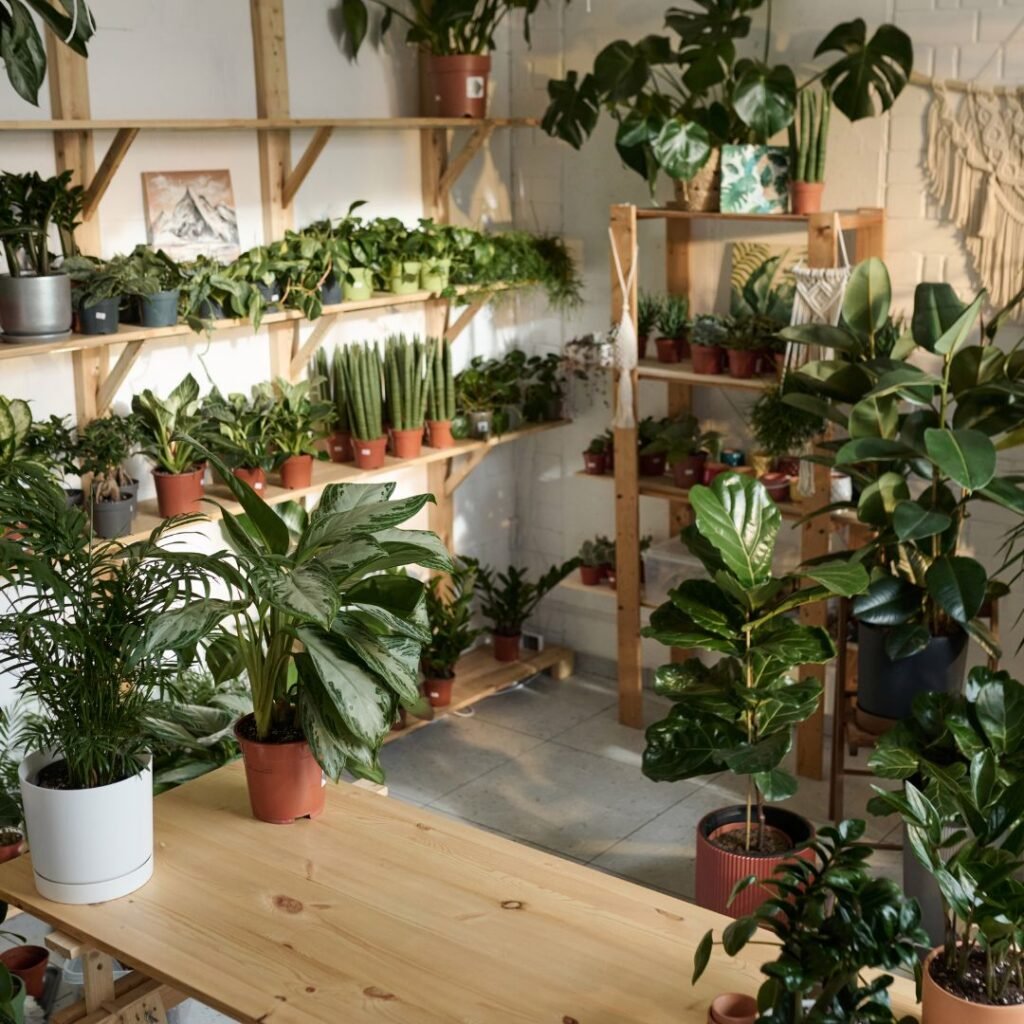
I always move my plants closer together before heading out of town. When they’re bunched up, they create a cozy pocket of humidity for each other.
Even for non-tropical plants, I notice their leaves lose less water in a group. I usually pick a spot out of direct sunlight, so they share the available light without getting scorched.
If I’m not sure where to put them, I’ll try the kitchen or bathroom—those rooms usually have a bit more moisture in the air.
But I don’t crowd them too much. Gotta let the air move between pots so there’s no mold or weird stuff growing.
Sometimes I add a shallow tray of water or a damp towel near the group (but not under the pots). The extra humidity really helps.
I’m careful that no leaves are touching, since that can lead to rot. Grouping plants is a simple move I always make before leaving!
5) Apply mulch to soil surface
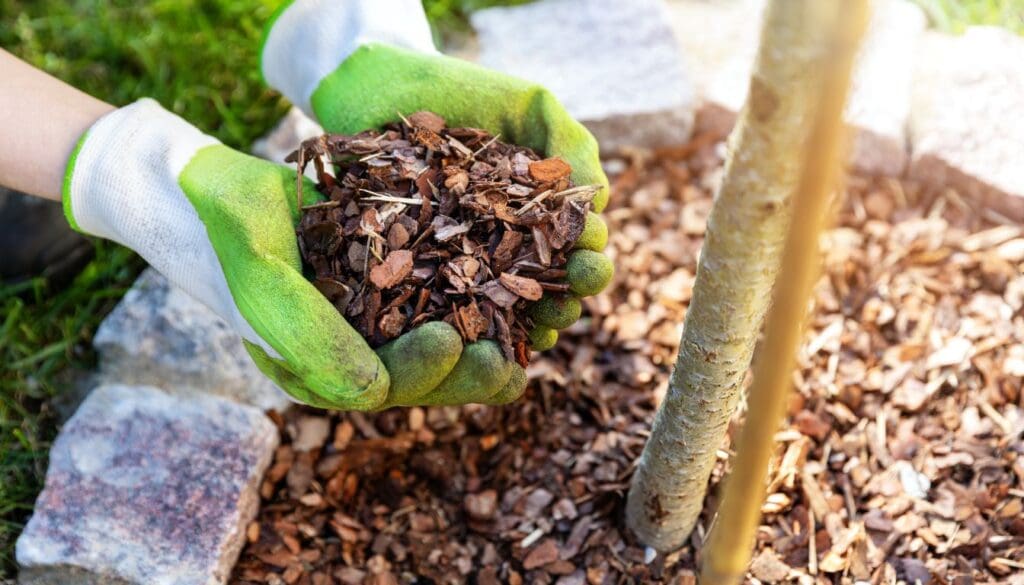
If I’ll be away for a while, I cover the soil in my pots and garden beds with mulch. Mulch is like a little blanket—it locks in moisture and keeps the soil cool.
I’ll use whatever I have: shredded bark, wood chips, straw, or even dried grass clippings. A layer an inch or two thick really makes a difference.
I’m careful to keep mulch away from the plant stems so nothing gets soggy or starts to rot.
I always water my plants well first, then gently spread the mulch on top. The soil just stays damp so much longer, even if it’s hot out.
Bonus: mulch helps block weeds, so I don’t come home to a wild mess. It’s a quick step that really pays off.
6) Hire a trusted neighbor to water
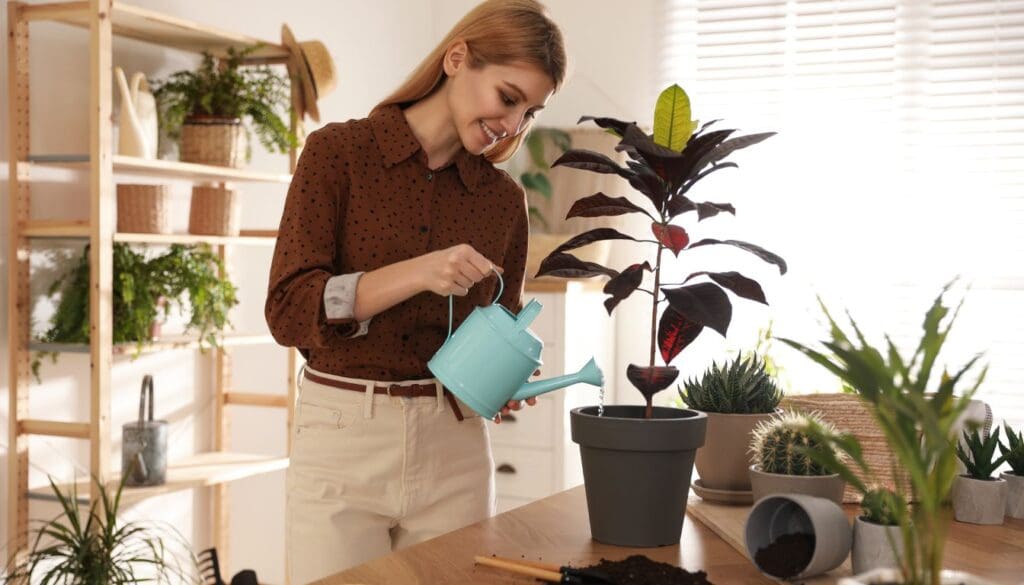
If I’m going away, I’ll ask a trusted neighbor to water my plants. Sometimes, that’s just the easiest solution.
I pick someone I know well, maybe a friend or a neighbor I chat with. I make sure they’re comfortable with plants and leave clear instructions on how much and how often to water.
I do a quick walk-through with them before I leave, pointing out which plants need extra attention. If any plant is fussy, I mention it.
I set out watering cans and any tools they might need, just to make things easier. I leave my contact info in case they have questions.
Sometimes, I offer to water their plants next time they travel. It’s a nice way to share the load, and it builds trust in the neighborhood.
If they help out, I always thank them—maybe with a small gift or a homemade treat. A little thank you goes a long way.
7) Use a moisture-retentive gel
I’ve started using moisture-retentive gel when I’m traveling. This stuff holds water and slowly releases it into the soil, keeping my plants hydrated while I’m gone.
It’s pretty easy to use. I just mix it into the soil before I leave. Works with both indoor and outdoor plants.
I usually find the gel at garden centers, in small packets or tubs. It’s not messy, and I don’t have to worry about leaks or spills.
For bigger pots, I use more gel. Smaller plants only need a little. It gives me some peace of mind, honestly.
If I’m gone for a week or more, I’ll combine the gel with a deep watering. My plants have extra moisture stored up that way.
The gel is safe for most plants, but I’ll check for any special instructions if I have sensitive species. If I’m unsure, I test it on just one plant first.
I mix the gel evenly into the soil so every root gets some. It’s easy, affordable, and works surprisingly well!
8) Move plants to larger pots with more soil

If a plant looks cramped before I travel, I’ll move it into a bigger pot. A larger pot means more soil, and more soil means more water for the roots.
Extra soil keeps roots moist longer. Small pots just dry out way too fast, especially if it’s hot.
When I repot, I’m gentle with the roots and add fresh soil around them. The extra space lets the plant breathe and grow too.
I always use pots with drainage holes. That way, extra water can escape and I don’t have to worry about root rot.
Repotting doesn’t take long, but it really helps my plants survive while I’m gone.
If I don’t have a bigger pot, I’ll use a temporary container—just make sure it’s clean and deep enough to hold more soil and water.
Bigger pots give my plants a better shot at staying healthy when I can’t water them every day. It’s honestly one of my favorite tricks for plant care during vacation.
Understanding Your Plants’ Specific Needs
I always try to learn a bit about each plant I own before leaving for vacation. When I know what each one needs, I can prep them better—and worry a lot less while I’m away.
Assessing Plant Types and Care Requirements
Some plants are super thirsty, while others barely blink if you forget them for a week or two. Succulents and cacti? They’re pretty chill—they like their soil to dry out before you give them another drink, so I don’t stress if I skip them now and then.
Ferns, peace lilies, and tropicals are a whole different story. They want their soil to stay a little damp and really appreciate extra humidity.
I usually scribble out a quick list before I leave:
| Plant Type | Water Needs | Special Notes |
|---|---|---|
| Snake Plant | Low | Tolerates dry soil |
| Fern | High | Likes humidity |
| Cactus/Succulent | Very Low | Needs drainage |
| Peace Lily | Medium | Avoid direct sunlight |
Knowing what each plant likes helps me figure out which ones need more attention and which ones will be fine on their own. I check the soil, look for yellowing leaves, or notice if stems are drooping.
If a plant looks stressed, I’ll move it, change how much I water it, or adjust its light. Sometimes it’s a bit of a guessing game, honestly.
The Impact of Light and Temperature Changes
Plants definitely notice even small changes in light and temperature. When I’m not around, I try to make sure they still get enough sunlight—but not so much that they dry out.
Too much direct sun can be rough, especially if I’m not there to give them a drink. If I close the curtains or move plants away from windows, I keep an eye out for leaves losing color or turning brown.
I like to keep the house at a steady 65–75°F. Drastic changes can really shock some of the more sensitive plants.
For tropicals, I keep them away from air conditioners or drafty windows. In the summer, I steer clear of spots where the midday sun might scorch their leaves.
Before heading out, I always double-check that everyone’s in a safe, cozy spot.
How Absence Affects Plant Health
Leaving my plants alone can lead to issues—dry soil, extra heat, or less light than they’re used to. Some might start looking a little sad, but I can usually spot clues and help them bounce back once I’m home.
Recognizing Signs of Stress and Recovery
When I get back, I check for wilted leaves, yellowing, or droopy stems. These are usually the first signs they struggled while I was away.
Sometimes leaves drop or the soil feels bone dry. If there’s mold or soggy soil, I probably overdid it on watering before I left.
To help them recover, I snip off dead leaves and check if the soil’s too dry or too wet. I’ll water just enough and move them to a spot with the right light.
Recovery can take a few days, so I watch for new leaves or stems perking up.
Frequently Asked Questions
I like to keep things simple—practical tricks and tools help me keep my plants happy when I’m gone. A few easy watering systems and some clever arranging usually do the trick.
What are the best ways to water my indoor plants during a month-long holiday?
I set up self-watering globes or spikes filled with water. They slowly give my plants a drink while I’m away.
I also move all the pots to a cool, shaded spot so they don’t dry out as quickly.
Can you suggest any tips for keeping outdoor plants hydrated while I am on vacation?
I use a drip irrigation kit (Rain Bird is a good one) to give outdoor plants a steady drink. Adding mulch on top of the soil helps keep the moisture in and the roots cool.
How do I ensure my potted plants remain moist during my two-week trip?
I bunch my potted plants together and keep them out of direct sun. Filling trays with water and setting the pots on top lets the soil soak up water slowly.
It’s a pretty easy way to keep them damp without overdoing it.
Is it possible to keep my indoor plants healthy if I’m away for three months?
For three months? That’s a stretch, but doable. I usually ask a neighbor or friend to check on my plants every week or so.
Self-watering systems and a cool, shaded spot help a ton too.
What strategies can I use to maintain my plants when I’m not home for an extended period?
Automatic watering systems are my go-to. I group plants together to bump up humidity and cover the soil with mulch.
Those steps really help my plants survive even if I’m gone for a few weeks.
Are there any self-watering solutions for plants I can set up before going on vacation?
Absolutely! I usually go with watering globes, spikes, or sometimes I’ll rig up a basic drip system.
They’re all pretty straightforward and don’t need any power—just set and forget, honestly. These methods help keep the soil moist, so I don’t have to stress about my plants getting thirsty while I’m away.
Recommended Garden Supplies
| Product Image | Our Recommended Gardening Supplies | Check Offers! |
|---|---|---|
Top Top
Top
Top
Top
Top
Top
Top
Top | rePotme Houseplant and Tropical Classic Potting Soil Mix | Check Offer On Amazon |
 Top
Top
Top
Top
Top
Top
Top
Top | Espoma Organic Indoor Plant Food | Check Offer On Amazon |
 Top
Top
Top
Top
Top
Top
Top
Top | GooingTop LED Grow Light 6000K Full Spectrum Clip Plant Growing Lamp | Check Offer On Amazon |
 Top
Top
Top
Top
Top
Top
Top
Top | Soil Moisture Meter | Check Offer On Amazon |
 Top
Top
Top
Top
Top
Top
Top
Top | Govee Hygrometer Thermometer, Bluetooth Enabled! | Check Offer On Amazon |
 Top
Top | LEVOIT Humidifiers for Large Room(Best For Plants) | Check Offer On Amazon |
 Top
Top
Top
Top
Top
Top
Top
Top | Upgraded DIY Automatic Drip Irrigation Kit, 15 Potted Houseplants Support | Check Offer On Amazon |
 Top
Top
Top
Top
Top
Top
Top
Top | Stainless Steel Heavy Duty Gardening Tool Set | Check Offer On Amazon |
 Top
Top
Top
Top
Top
Top
Top
Top | Bonide Insecticidal Soap | Check Offer On Amazon |
 Top
Top
Top
Top
Top
Top
Top
Top | Bonide 32 oz Spray Neem Oil for Organic Gardening | Check Offer On Amazon |
 Top
Top
Top
Top
Top
Top
Top
Top | Garden Safe Fungicide | Check Offer On Amazon |

